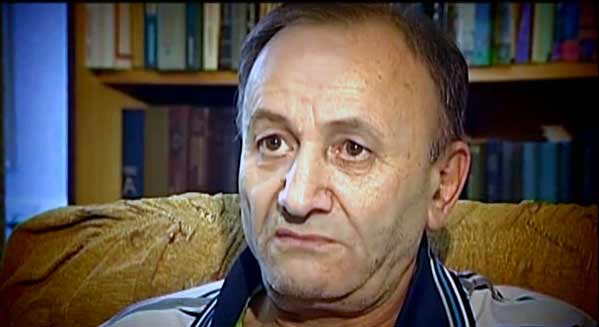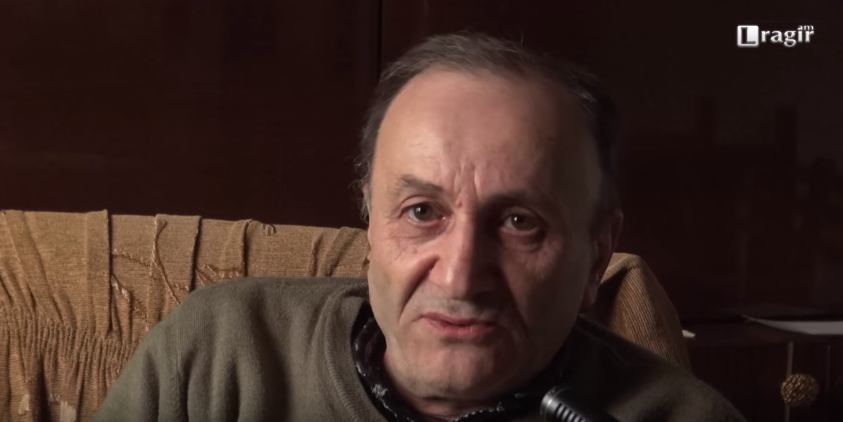Bi-Annual Report of Peace Dialogue on Human Rights in the Armenian Armed Forces/ Vol.9
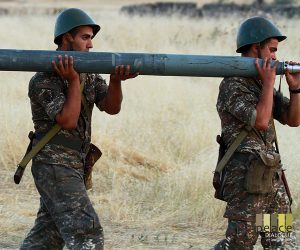
The report covers the following topics:
- The Armenian Defense Minister’s vision for ensuring human rights and democracy
- Peace Dialogue NGO suspends its involvement in the Investigative Committee’s public monitoring group
- Court obligates Defense Ministry to re-calculate amount of compensation for military servicemen’s tuition
- Statistics on fatalities registered in the Armenian Armed Forces during H1 2019
PEACE DIALOGUE’S ONGOING LAWSUITS AND THEIR CURRENT STATUS
- Information about the preliminary
investigation of soldier Levon Torosyan’s death - Update on the investigation into serviceman Arman Muradyan’s death
- Information about the investigation into soldier Manuchar Manucharyan’s death
- Update on the investigation of the deaths of servicemen Grigor Avetisyan and Suren Aramyan
- Information on the investigation into Harutyun Hambaryan’s death
The Armenian Defense Minister’s vision for ensuring human rights and democracy
The Defense Ministry’s (hereafter MoD) policy, the logic of its activity and approach to its most recent concept of presenting society the idea of a “Nation-Army” was conceived by former Defense Minister Vigen Sargsyan.

Defence Minister of Armenia
The concept was supposed to be reviewed after the Velvet Revolution. The new Defense Minister Davit Tonoyan said in an interview that he did not object to continuing positive initiatives implemented as part of the previous concept. This hints at the possibility that the MoD, under his leadership, will also build on successful components of the “Nation-Army” concept. This belief is based on the vision mentioned on the MoD’s website.
On the MoD website, for the first time, much attention has been paid not only to external security and the necessity to establish it at any cost, but also a reference has been made to making substantial democratic changes in the army. These include greater accountability, transparency, effective/efficient use of funds, minimizing non-statutory relations, investigating violations of soldiers’ personal rights and dignity (including self-injury and suicide attempts), increasing civilian control over the army, increasing society’s trust in the army, ensuring the apolitical nature of the Armed Forces (hereafter AF) and preserving political neutrality, as well as demonstrating the devastating impacts of corruption. It is important to note that these issues are highlighted in David Tonoyan’s vision for achieving the AF’s main objective: ensuring the security of the Republic of Armenia (hereafter RA) and continually improving security in Armenia and Nagorno Karabakh. Ensuring human rights protection in the AF is also considered a priority. To achieve that objective, the MoD wants to increase the level of conscripts’ legal and personal rights awareness and to boost transparency and simplify conscripts’ exams.
Strengthening of justice and public trust were also key aspects of the “Nation-Army” concept. Before the Velvet Revolution, in his response to an inquiry by Peace Dialogue, Nikol Pashinyan, currently the Prime Minister and head of the Yelk (Exit) faction at the time (the only faction that voted against the “Nation-Army” concept and the RA “Law on Military Service and the Status of Military Servicemen”) stated:
“The “Nation-Army” Concept and its activities, in particular the “Law on Military Service and the Status of Military Servicemen” adopted by the National Assembly in 2017, contains numerous risks, that is why the Yelk (Exit) faction voted against the draft law. We believe the involvement of different civil society groups in the process of implementing the “Nation-Army” concept to be insufficient. There is a critical gap in terms of civilian control over the activities of the Armenian Armed Forces.”
It seems encouraging and uplifting that the MoD places importance on human rights issues and that transparency and civilian control are Defense Ministry priorities. It is still not clear how these fundamental democratic changes can be achieved when the “Law on Military Service and the Status of Military Servicemen” is still in force despite having been criticized by civil society. The law, as well as the “Nation-Army” concept (which is still functioning) contains many risks and does not ensure sufficient involvement of different civil society groups. Peace Dialogue NGO will send a written inquiry to the Defense Minister concerning this contradiction along with questions on how, and using what additional mechanisms, democratic reforms will be implemented in the AF. We hope to include the ministry’s response in our next report.
Peace Dialogue NGO suspends its involvement in the Investigative Committee’s public monitoring group
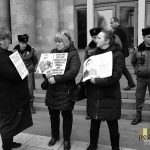 Along with a number of other non-governmental organizations operating in Armenia, Peace Dialogue NGO has, since November 2018, been involved in the public monitoring group established by the RA Investigative Committee (hereafter IC). The group now includes eight NGOs and one foundation.
Along with a number of other non-governmental organizations operating in Armenia, Peace Dialogue NGO has, since November 2018, been involved in the public monitoring group established by the RA Investigative Committee (hereafter IC). The group now includes eight NGOs and one foundation.
The group was established to investigate criminal cases involving non-combat deaths during military service and to identify systemic shortcomings, omissions and problems during the investigation of individual cases and present them to the Investigative Body and the public.
Considering that, after eight months, the group’s activity did not contribute to the revelation of non-combat deaths in the AF and further deepened victims’ legal successors’ mistrust of Investigative Body activity, PD announced the suspension of its activities in monitoring group in June this year. It made a public statement citing the following reasons:
1. Despite the fact that the Group’s member NGOs signed a non-disclosure agreement related to confidential, pre-investigative materials uncovered as part of the Group’s activities, the IC did not provide copies of criminal case materials.
The IC suggested that member NGOs would be officially recognized as representatives of victims’ successors by victim successors attending criminal proceedings. In such cases, NGOs would be able to familiarize themselves with cases without any impediments. However, this simply questions the necessity of the Group overall. Basically, there are no legal barriers for human rights defenders not involved in the Group to engage in their own investigative work, provided they are recognized as victims’ legal successors in those victims’ criminal cases. They can present their positions on shortcomings and violations that occur during the investigation of cases based on their own findings and analyses. They can also develop and make their own suggestions for legal reforms. Furthermore, irrespective of involvement in the aforementioned Group, both the IC and any other Investigative Body are obliged to proceed and initiate proceedings on criminal complaints as filed by human rights defenders or any citizen. The IC must then take steps to address those legal issues and work toward the resolution thereof.
2. The IC did not take any steps to verify or review numerous instances of illegal activity, omissions, fraud and official inaction revealed by our organization during the investigation of the criminal case related to the death of serviceman Grigor (Hermon) Avetisyan. Likewise, they did nothing to bring the criminals to justice.
According to a statement made by the Deputy Head of the IC, Artak Krkyasharyan, the IC is open to providing information on issues uncovered by monitoring group member NGOs during the investigation of criminal cases related to deaths/fatalities in the AF. As explained below, PD sent a report to the IC on 8 May 2019 outlining numerous gaps and shortcomings it uncovered as concerns the investigation of the criminal case relating to serviceman Grigor (Hermon) Avetisyan’s death reported on 6 April 2016. In a letter attached to the report, the organization requested that the IC provide information on concrete actions it had taken or that it would take to address the aforementioned gaps and to rectify the shortcomings pointed out in our report. Instead of doing so, in its response to our 27-page letter (report) addressed to the Head of the RA Investigative Committee, we received a response dated 5 June 2019, wherein the Deputy Head of the General Military Investigative Department G. Mayilyan simply notified PD that the letter (report) had been reviewed by the RA Investigative Committee’s General Military Investigative Department. The RA Investigative Committee forwarded the letter to the IC so that it could be addressed during the working group’s regular discussions.
When joining the Group, we expected that, as a result of Group activities, practical steps would be taken to eliminate revealed shortcomings, to identify perpetrators, and to bring them to justice. The review report on Grigor Avetisyan’s case identifies and lists a number of crimes. Thus, the Investigative Body should have taken into consideration those sections of the report and deliberated on them per regulations stipulated by RA laws on criminal reports. That is to say, it should have initiated a proceeding or proceedings based on the materials contained in the PD report instead of sending the material to the working group. Obviously, the steps taken by the IC suggest that criminal proceedings with concrete phases should be initiated and carried out against the IC General Military Investigative Department, the Military Police, the investigators and the prosecutors in the Military Prosecutor’s Office, i.e. their own partners. This will undoubtedly require exceptional political will, which appears to not exist yet in today’s Investigative Bodies: not even after the Revolution.
Relatives of a number of soldiers who died in non-combat conditions have assured PD that, so far, the Group’s work has not contributed to the determination of their relatives’ actual causes of death. On the contrary, the Group’s work has limited their opportunities to address their concerns and demands to government officials. This is because now public officials respond by stating that only the public monitoring group established by the RA IC implements activities to address concerns raised by victims’ successors. This, however, in cases related the aforementioned unresolved issues, is clearly not true.
Based on the aforementioned circumstances, PD stated that efficient work by the public monitoring group conducting investigations into criminal cases related to cases of non-combat fatalities during military service instances will not be possible as long as:
a) There are no legally-based approaches and mechanisms for organizations involved in the Group to familiarize themselves with materials from criminal cases;
b) Investigators do not change their malicious habits and practices that they have formed over decades.
Peace Dialogue NGO declared that the organization will continue its activities aimed at protecting the rights of relatives of servicemen who died in non-combat situations. We will continue using other platforms and measures established by law, since the absence of legally-based approaches and mechanisms, along with the system’s inability to rid itself of corruption, hinders and distorts our organization’s mission when carrying out activities as part of the Group.
Following our announcement on the suspension of our activities in the monitoring group, PC received a statement of clarification from the RA IC on 18 June. It provided a detailed explanation of how the Investigative Body “succeeded” in investigating the double murder cases of two friends: both at the same time and place. They revealed who murdered the one soldier, and as for the other murder
“… all possibilities for obtaining new evidence have been exhausted. So a decision was made to suspend the proceedings for the criminal case involving Suren Aramyan’s murder; this on grounds of not being able to involve suspect(s).”
The Information and Public Relations Department of the RA IC also reported that the letter with the PD report was sent to the RA’s Fifth Garrison Investigation Department which was asked to investigate the issues raised.
Court obligates Defense Ministry to re-calculate amount of compensation for military servicemen’s tuition
 Peace Dialogue NGO initiated strategic litigation to protect the interests of military servicemen who graduate from military educational institutions and refuse to pursue post-educational contracted military service. Lawyer Artur Sukiasyan filed a complaint to the courts, on behalf of PD, with a demand to strike down the provision in the Government Decree that had been imposed on him.
Peace Dialogue NGO initiated strategic litigation to protect the interests of military servicemen who graduate from military educational institutions and refuse to pursue post-educational contracted military service. Lawyer Artur Sukiasyan filed a complaint to the courts, on behalf of PD, with a demand to strike down the provision in the Government Decree that had been imposed on him.
In cases of refusal of post-educational contractual military service, military servicemen who have graduated from military educational institutions, are obligated to cover (pay back) their tuition fees. The procedure regulating compensation of tuition fees in cases of refusal to do post-educational contractual military service is governed by requirements in the “Regulation for compensation of tuition fee costs by military servicemen having graduated from military educational institutions in cases of refusal to do post-educational contractual military service” included in the RA Government Decree No. 393-N from 8 April 2018. Article 3 of the aforementioned regulation states that costs incurred by the State for compensation of educational fees are to be calculated on the basis of cost per student beginning on the date of the graduate’s release from the military.
Per the provisions of this legal act, servicemen refusing military service do not pay the actual cost of their tuition, rather the amount the State spends on one serviceman-student starting on the date of their release. Per the terms of such a legal regulation, those persons released from military service compensate the State not for the actual amount of money spent on their educational expenses, but rather pay a sum that the State has not actually spent on them. This does not fit with the logic and regulations for compensation.
Provisions in Decree No. 393-N are applied to graduates of all military educational institutions who refuse to do military service. Peace Dialogue NGO thus launched an initiative directed at striking down the provision in court in order to change law enforcement practices in this context and raise public awareness of the issue.
The RA Administrative Court decided to refuse Armen Sargsyan’s request to strike down the last paragraph of Article 3 of the “Regulation for compensation of tuition fee costs by military servicemen having graduated from military educational institutions in cases of refusal to do post-educational contractual military service” governed by Government Decree No. 393-N on grounds that the applicant had missed the deadline for filing a complaint with the court.
The court took into account that Armen Sargsyan had been informed about the amount of money owed as compensation for his tuition fee. This information had been sent to him in an official note on 5 December 2017. The last paragraph of Article 3 of the “Regulation for compensation of tuition fee costs by military servicemen having graduated from military educational institutions in cases of refusal to do post-educational contractual military service” was first actually applied to Armen Sargsyan in 2017 at the time of calculation of the amount of tuition fees subject to compensation.
Based on the above circumstances, the Court found that the countdown for the timeframe set out in Article 193, Section 1 of the RA Administrative Procedure Code (procedural deadline for application) began in December 2017. This was deemed the date of application (real act) of the relevant provisions of the disputed normative legal act, and, based on this, the Court concluded that Armen Sargsyan had missed the procedural deadline for application as per Article 193 of the RA Administrative Procedure Code.
An appeal, dated 15 January 2019, was filed against the Court Decision on the return of the application. The appeal was submitted on grounds that regulations in the normative legal act disputed by Armen Sargsyan concerned the calculation of costs incurred starting from the date of release from the military. The aforementioned formulation states that the date of dismissal from military service is set as the basis for application of the above-mentioned legal norm. The above-mentioned normative legal act may not be applied to a military serviceman earlier than the date of release from the military. In cases of such wording in legal norms, it is only natural that the legal act cannot be applied to a period preceding the date of release from the military. Thus, the court’s claim that, back in 2017, the provisions of the above-mentioned legal norm were applicable to the case of a military serviceman released from the military on 24 September 2018 are indeed unacceptable.
Armen Sargsyan was released from the military per RA Defense Ministry Decree No. 1569 dated 24 September 2018. Hence, the date of application of the legal norm in Armen Sargsyan’s case is 24 September 2018. Any other interpretation of the date of application of the disputed legal norm as relates to Armen Sargsyan will contradict the wording “as of the date of release from the military” stated in the legal norm.
Ignoring the aforementioned, the RA Administrative Court of Appeal rejected the request.
With the re-filing of Armen Sargsyan’s case, submitted to the RA Administrative Court, Peace Dialogue NGO requested that the courts obligate the MoD to recalculate tuition costs subject to compensation. PD also asked that the MoD reduce the amount subject to repayment by the amount of work completed by military servicemen on non-working Saturdays during contractual service.
The calculation of food costs for Armen Sargsyan during his study course was carried out by the Military Institute. During investigations of the case, it turned out that the sum calculated was not based on the amount spent on the cadet officer, rather the general food delivery service cost was charged. This included food, utensils, furniture, technical equipment, household goods, salaries and utilities.
The original claim filed on the basis of the above-mentioned was approved, and a claim was filed by the organization’s lawyer to recalculate food costs given that pre-conscripted servicemen are only obliged to reimburse food value.
The RA Administrative Court ruled in favor of Armen (Sarvan) Sargsyan’s request in the administrative case No. VD/1362/05/18 dating from 1 April 2019 obliging the RA MoD to recalculate the amount subject to compensation for Armen Sargsyan’s tuition fee and to subtract from that amount payment owed for his military work done on non-working Saturdays.
The RA MoD appealed the Court ruling in the administrative case No. VD/1362/05/18 of 1 April 2019. The RA MoD partially appealed the Administrative Court’s verdict regarding the amount payable for work done on non-working Saturdays. The Court filed a response to the appeal.
A court hearing on the administrative case No.VD/1362/05/18 has been scheduled for 5 March 2020.
At the same time, a complaint was filed with the RA MoD. Armen Sargsyan requested that the MoD comply with requirements in Decision No. VD/1362/05/18 on grounds that the verdict was not appealed (with respect to food value).
Statistics on fatalities registered in the Armenian Armed Forces during H1 2019
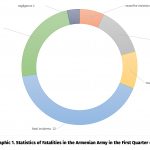
Peace Dialogue NGO has collected information from the Republic of Armenia’s (RA) Ministry of Defense (MoD) and the Nagorno Karabakh (NK) Defense Army (DA), along with other sources, on 29 deaths recorded in the Republic of Armenia (RA) Armed Forces (AF) during the first half of 2019.
Two (2) of the fatalities mentioned happened as a result of a ceasefire violations; three (3) were murders; twelve (12) were fatal incidents; four (4) involved deaths by suicide; seven (7) cases were the result of health problems; and one (1) fatality was the result of negligence.
PEACE DIALOGUE’S ONGOING LAWSUITS AND THEIR CURRENT STATUS
Information about the preliminary investigation of soldier Levon Torosyan’s death
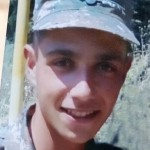 On 6 May 2018, at approximately 7:30 a.m., the body of Levon (Arsen) Torosyan (born in 1999, second 2017 draft at the Armavir Military Commissariat) was found with a mortal gunshot wound to the head.
On 6 May 2018, at approximately 7:30 a.m., the body of Levon (Arsen) Torosyan (born in 1999, second 2017 draft at the Armavir Military Commissariat) was found with a mortal gunshot wound to the head.
This fatal discovery of his body occurred at the Hakobasar military base which houses the RA MoD Military Unit 21127; the base is located in the northeastern part of Armenia.
The RA IC’s sixth Garrison Investigative Department filed a criminal case N90753018 on the incident as per Article 110 (Section 1) of the RA Criminal Code, i.e. they classified it as death by suicide.
Investigation into Levon Torosyan’s case has been underway for over a year. Meanwhile, the criminal case has advanced significantly from the RA’s sixth Garrison Investigation Department to the IC Department for Investigation of Especially Important Cases and also to the Special Investigations Service.
In December of last year, the case was sent to a fourth Investigative Body, the National Security Service’s Investigative Department. The aggrieved party was hopeful that at least this time the Investigative Body would reveal the cause of death (motivation for murder). They hoped the murderers would be punished along with the law enforcement officials who did everything possible to conceal the murder. However, during recent months, it became clear that an objective investigation of the case was not carried out. In March this year, the representative of the victim’s legal successor, PD Expert R. Martirosyan, appealed to the investigator of the National Security Service’s Investigative Department, H. Manukyan, and head of the Investigative Department, A. Aghajanyan, to assign the case to a different Investigative Body.
The aggrieved party’s appeal was rejected. The case now remains in the hands of the National Security Service, but no work is being done on the investigation.
Update on the investigation into serviceman Arman Muradyan’s death
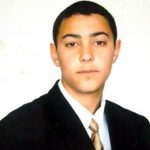
Soldier Arman (Hovsep) Muradyan (born in 1993) received a fatal gunshot wound on 30 July 2013 at the protection/security area of one of the NK military units in northeastern Nagorno-Karabakh.
At the end of last year, the soldier’s father and legal successor Hovsep Muradyan contacted Peace Dialogue NGO with a request for legal support concerning the investigation into his son’s death.
The aggrieved party did not agree with the legal acts carried out during the investigation and filed a complaint directly to RA Prime Minister Nikol Pashinyan. Per the Prime Minister’s orders, the RA Military Prosecutor’s Office has relaunched an examination of all case materials. As a result, it was revealed that investigators D. Igityan and S. Tamazyan violated official protocols numerous times during the course of the case’s preliminary investigation. Because of this, the Military Prosecutor’s Office petitioned the RA Special Investigative Service with a request for a legal and criminal evaluation of the investigators’ actions and to prepare materials thereon. On 18 November 2018, however, S. Avetisyan, an investigator at the Special Investigative Service, decided to reject the petition to launch a criminal investigation. The aggrieved party appealed the decision, which was also rejected in a decision by the Chief for the Investigation of Particularly Important Cases at the RA Prosecutor General’s Office.
On 10 January 2019, the aggrieved party appealed the decision to refuse the relaunch of the criminal case by court order.
Taking into account the arguments of the aggrieved party and considering them to be satisfactory, the court decided to support the appeal and called for the preliminary investigative body to rescind its decision on refusal to refile a criminal case and relaunch an investigation.
A. Shahbazyan, senior prosecutor at the Armenian Prosecutor General Office’s Department for Investigation of Especially Important Cases, filed an appeal to confirm the legitimacy and validity of the 14 February 2019 ruling handed down by the Yerevan Court of General Jurisdiction.
On 21 May of this year, the Armenian Court of Appeals dismissed the petition by the prosecutor’s office and let the first instance court’s decision on a new investigation into the case of the serviceman Arman Muradyan stand.
A month and a half have passed since the Court of Appeals made its decision. The aggrieved party has still not been informed about how the court will further proceed; whether a criminal case has been launched (if yes, by whom); and whether the new investigation is underway now. The aggrieved party appealed to the RA Prosecutor General in hopes of obtaining responses to these questions.
Information about the investigation into soldier Manuchar Manucharyan’s death
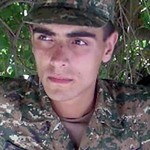 After exhausting all possibilities for recourse in the Armenian courts concerning the case of his brother’s death, Onik Manucharyan (brother and legal successor to soldier Manuchar Manucharyan) filed a lawsuit to the European Court of Human Rights. His brother Manuchar died on 31 July 2013 at the base for the RA MoD Military Unit N24923. The official cause of death was reported to be death by suicide.
After exhausting all possibilities for recourse in the Armenian courts concerning the case of his brother’s death, Onik Manucharyan (brother and legal successor to soldier Manuchar Manucharyan) filed a lawsuit to the European Court of Human Rights. His brother Manuchar died on 31 July 2013 at the base for the RA MoD Military Unit N24923. The official cause of death was reported to be death by suicide.
Lawyer Mushegh Shushanyan’s claim states that, according to the plaintiff, the government respondent did not fulfill its duties concerning the protection of
Manuchar Manucharyan’s life at a military unit base over which it had exclusive control. It also did not fulfill its duties to conduct an effective investigation into the death of Mr. Manucharyan and to prosecute the perpetrators. It should be noted that lawyer Mushegh
Shushanyan and the representative of the victim’s successor, Peace Dialogue NGO expert Ruben Martirosyan, found a number of violations committed during the preliminary investigation and court trials.
Particularly, no sufficient fingerprints necessary for further comparative analysis and identification were found on the AKS No. 1119879 that the deceased supposedly used as his weapon when he died, nor were there sufficient fingerprints on the magazine attached to the machine gun. This indicates that the fingerprints were deliberately tampered with by an undisclosed person. No investigation has been carried out, nor have the courts issued any official statement.
This is likely because it would contradict the false hypothesis of suicide. Statements by A. Abrahamyan and A. Sahakyan on their preliminary testimonies’ incompatibility with reality and use of coercion were not properly evaluated by the courts yet were nonetheless used as the basis for court decisions.
The preliminary Investigative Body made no proper investigation into the various injuries found on M.
Manucharyan’s body (caused posthumously and shortly before his death). No efforts were made to determine the details of their origin or to figure out which person/persons caused the injuries. The Court of First Instance did not even assess this fact.
A hole 5 mm in diameter, typical of those caused by a gunshot, was found on the back side of the right leg of Manucharyan’s trousers (the clothing examination protocol states: “The left leg of the military fatigues is soaked up to the knee in a thick, blood-like substance; on the right leg of the fatigues approximately 3.5 cm above the side pockets there is a round (half-moon shaped) hole with a diameter of 1.5×1 cm with tattered edges. At the back of the right leg of the fatigues at knee level, there is an absorbed stain 10×25 cm size; above it, there is a round-shaped 5 mm whose edges appear to have been burnt”). Yet, according to the conclusions of forensic experts (in the “Conclusions” section of their report), no round-shaped hole to the victim’s military fatigues was detected.
At a trial in 2016, the examination of M. Manucharyan’s military fatigues revealed a gunshot hole 5 mm in diameter with burnt edges, i.e. just as described in the 2013 protocol on the clothing examination. However, an expert witness called by the court, A. Hambardzumyan stated that during the examination of Manucharyan’s clothes, he had found no gunshot wounds.
Considering the fact that there was no trace of the bullet’s supposed exit found on any other part of the fatigues, the aggrieved party expressed its conviction that the bullet remained in the victim’s right leg. These are circumstances that can be verified by exhuming the dead body. However, the court rejected the assignment of a secondary forensic examination of the trousers as well as the exhumation of the body.
The Criminal Court of Appeals rejected the plaintiff’s complaint in 2018 without referring to the arguments included in the appeal. Instead, the Court stated that the claims were groundless and were refuted by evidence obtained over the course of the case. The Court of Appeals refused to hear the case at all.
Footnote: On 3 April of this year, the aggrieved party received confirmation from the European Court of Human Rights that the Court Secretariat received their application and had launched a proceeding. The Court Secretary wrote, “The court will investigate the case at the earliest opportunity.”
Update on the investigation of the deaths of servicemen Grigor Avetisyan and Suren Aramyan
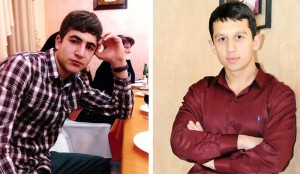 On 6 April 2016, Grigor Avetisyan and Suren Aramyan were killed at a military base. Two days later, Davit Dumikyan turned himself in and allegedly confessed to the Vardenis Military Police Department. He allegedly said that he murdered both Mr. Avetisyan and Mr. Aramyan. Later, Dumikyan withdrew his confession and insists it was extorted from him by a tall colonel: a Military Police employee.
On 6 April 2016, Grigor Avetisyan and Suren Aramyan were killed at a military base. Two days later, Davit Dumikyan turned himself in and allegedly confessed to the Vardenis Military Police Department. He allegedly said that he murdered both Mr. Avetisyan and Mr. Aramyan. Later, Dumikyan withdrew his confession and insists it was extorted from him by a tall colonel: a Military Police employee.
The double murder cases were artificially separated by the Investigative Body in 2018. The case involving Grigor Avetisyan’s death was sent to court (Davit Dumikyan was accused of the murder). The case involving Suren Aramyan’s murder was dismissed on grounds that all investigative actions made to find the murderer were ineffective. The parents, as well as Peace Dialogue NGO expert Ruben Martirosyan, believe that a fake, one-sided (biased) preliminary investigation was carried out as concerns the double murder case.
Following the Deputy Head of the IC’s, Artak Krkyasharyan’s, statement explaining that the IC is open to providing information on issues uncovered by monitoring group member NGOs during investigations of criminal cases related to fatalities in the Armed Forces, PD sent a query/report to the IC on 8 May 2019. That document highlighted numerous gaps and shortcomings discovered by the organization as concerns the investigation into serviceman Grigor (Hermon) Avetisyan’s death reported on 6 April 2016.
In response to a 27-page reference letter (report) addressed to the Head of the RA Investigative Committee, we received a response dated 5 June 2019. In that document, the Deputy Head of the General Military Investigative Department, G. Mayilyan, simply notified us that the reference letter (report) had been reviewed by the RA Investigative Committee’s General Military Investigative Department and sent to the IC for discussion during the working group’s regular meeting.
It was only after the announcement of PD’s withdrawal from the monitoring group that the Information and Public Relations Department for the RA Investigative Committee reported that the reference letter was sent to the RA IC’s fifth Garrison Investigation Department to look into issues raised.
Information on the investigation into Harutyun Hambaryan’s death
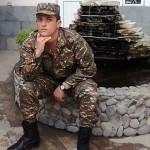 According to preliminary information, on 8 May 2015 at approximately 3:15 p.m., soldier Harutyun Hambaryan, a military serviceman in the MOD N military unit, died from a gunshot wound to the front of his head. The shot was fired from an AKMS machine gun.
According to preliminary information, on 8 May 2015 at approximately 3:15 p.m., soldier Harutyun Hambaryan, a military serviceman in the MOD N military unit, died from a gunshot wound to the front of his head. The shot was fired from an AKMS machine gun.
An investigation by the Syunik Regional Court of First Instance, presided over by Judge Davit Sargsyan, is underway. The results of a complex forensic-psychiatric and forensic-psychological examination of H. Hambaryan’s death case have been received. According to the “Conclusions” section of the expert opinion, materials from the case provide grounds for stating that there was a causal link between David Harutyunyan’s actions and Harutyun Hambaryan’s psychological state right before the latter’s death.
According to the examination, Davit Harutyunyan, a fellow soldier of Hambaryan, must be charged with a crime per Section 1 of Article 110, on grounds of driving Harutyun to die by suicide.
It should be noted that the first forensic-psychiatric and psychiatric examination did not prove a causal link between David Harutyunyan’s actions and Harutyun Hambaryan’s psychological state right before the latter’s death.
According to the victim’s successor representative, R. Martirosyan, this is a murder case. Based on a joint analysis of the findings of his forensic and therapeutic examinations, unidentified individuals had injured
H. Hambaryan’s head. He then vomited as a result thereof and was apparently unconscious at the moment of the shooting. The expert review also found that the shooting took place under different circumstances: i.e. the weapon was fired from a distance of up to one meter. This means that Harutyan could not have shot himself; he had to have been murdered.
No investigation has been carried out on the above-mentioned facts, which hints at the impartiality of the preliminary Investigative Body.
 Download Bi-Annual Report of Peace Dialogue on Human Rights in the Armenian Armed Forces/ Vol.9 (Period: January – June 2019) (Version: pdf, 2 Mb)
Download Bi-Annual Report of Peace Dialogue on Human Rights in the Armenian Armed Forces/ Vol.9 (Period: January – June 2019) (Version: pdf, 2 Mb)
Posted 02 August, 2019


